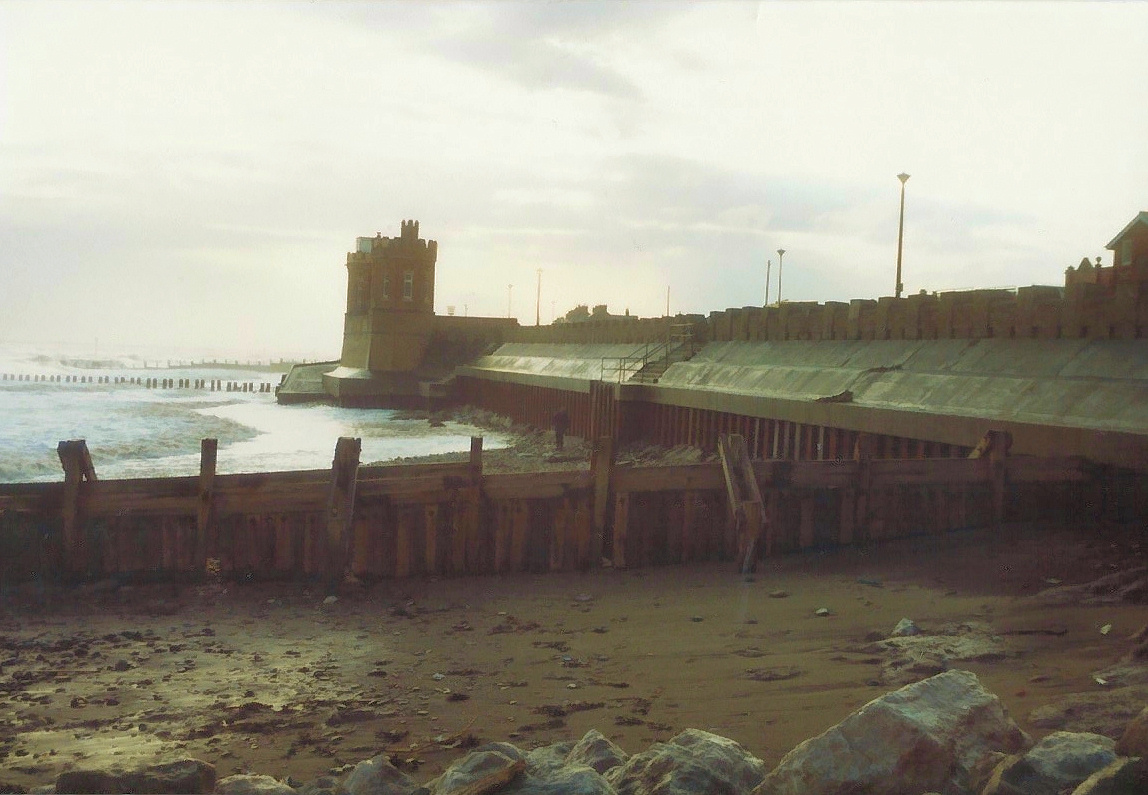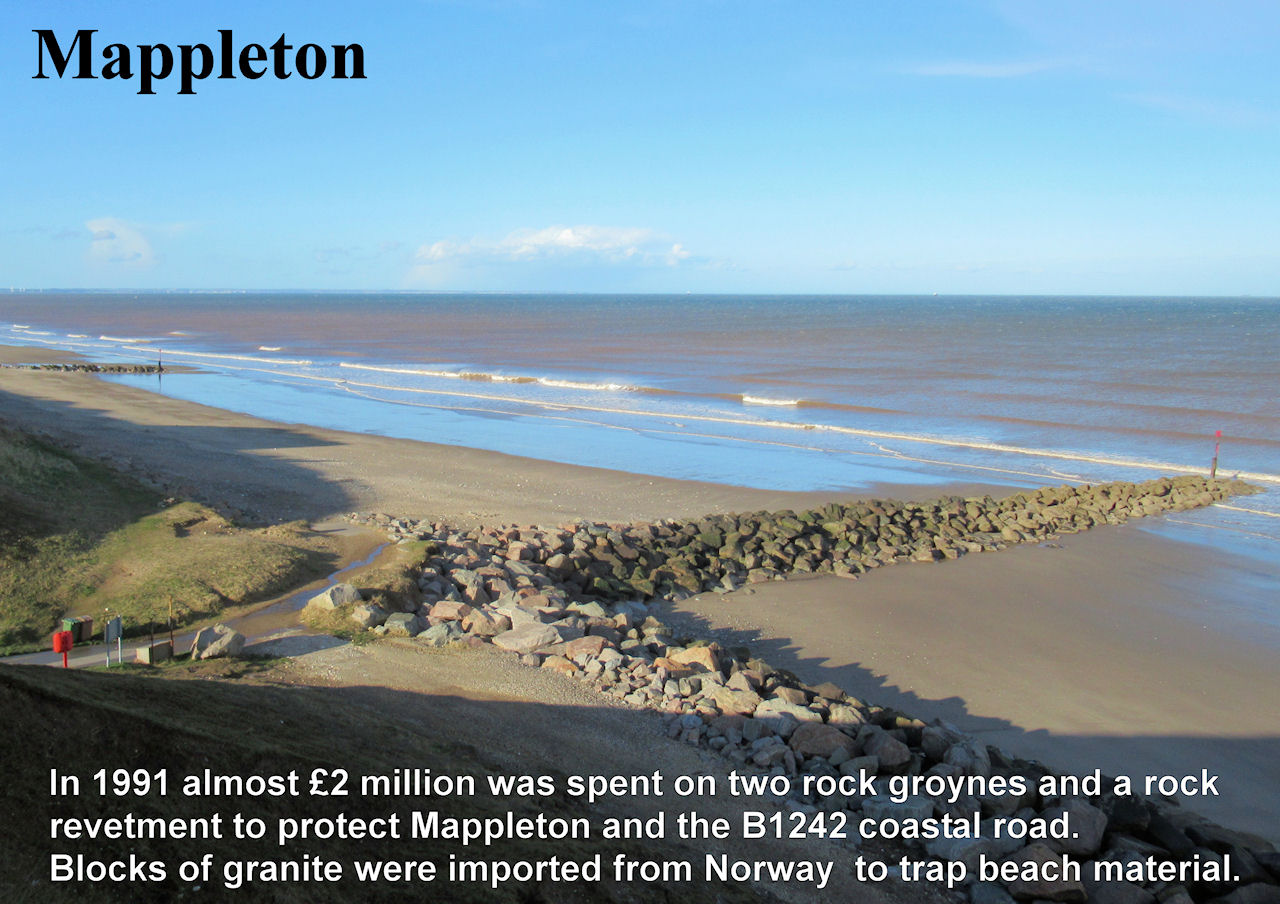CCO Sea Defences
East Yorkshire has a long history of coastal construction. The harbour at Bridlington has been in use as early as the 12th Century. Following gradual development over the intervening centuries Bridlington harbour underwent major upgrades and expansion in the first half of the 19th Century. However it was during the Victorian era that saw a more significant increase in the construction of harbours and coastal defence infrastructure all along the East Yorkshire coast. This increase in activity was largely in response to population growth at the coast, coupled to an increase in tourism and more general infrastructure development.
For a more detailed look at the science of sea defences in 1900,
take a look at this Article from the Pearson's Magazine February 1900

Defence Options
‘Coastal defence’ covers protection against coastal erosion, whereas protection against flooding by the sea is referred to as ‘sea defence’. Listed below are several options available to coastal engineers together with their advantages and disadvantages to combating erosion and flooding at the coast (ERYC, 2006c).
Sea walls
Sea walls are normally built in combination with some other form of beach control, with their effectiveness usually dependant on design and construction materials. They are commonly built from steel, concrete or ashlar blocks and orientated to vertical or near vertical to reflect wave energy. As they are costly to build, they are normally only considered in highly populated areas or where high-value assets require protection. The walls can incorporate a wave return profile to improve overtopping performance and a stepped apron toe or rock armour protection to reduce scour.
Advantages: Sea walls are a very effective preventative measure against erosion and overtopping and are strong enough to resist severe exposure. They can incorporate promenade amenity features and are generally safe for public use.
Disadvantages: The walls have poor energy absorption and high wave reflection rates, with the reflected waves causing greater beach scour which can lead to destabilisation of the fronting beach. They are a very expensive defence option.
Revetments
Revetments are sloping structures of either solid (concrete structures) or open construction (rock armouring, timber or block work) built close to, or in contact with the land behind and are designed to break up and dissipate wave energy. Most of the revetments along the East Riding coastline are solid concrete in construction. Rock armouring, used to reduce the impact of wave action, has become increasingly important in coastal defence works over the last 20 years. The rock used is typically very hard igneous rock (imported from Scandinavia) that is exceedingly resistant to erosion. When placed on a beach or at the foot of sea walls, the rocks are arranged to retain large void spaces between individual rocks. When the waves hit the rock armour, they are partially reflected, and the energy remaining in the water is reduced (so reducing its erosive capacity). Where rock armour is used to form, or protect, longitudinal defences (such as a sea wall) it is known as rip-rap. Rock armour may also be used to construct groynes.
Offshore breakwaters
Offshore breakwaters are usually made up of large rocks or pre-formed concrete units, and are constructed beyond the low water mark, running parallel to the shore or with one end linked to the shore. The structures have the effect of reducing the power of the waves that reach the shore by forcing the wave to break before reaching the beach, reducing the waves’ erosive potential and encouraging the deposition of sand. Various offshore breakwaters/reefs have been employed around the UK including Sidmouth in Devon, Newbiggin Bay in Northumberland and at Happisburgh and Sea Palling in Norfolk.
Although there are very few case studies on the use of different materials in the application of offshore breakwaters/artificial reefs within the marine environment for coast protection, it is generally accepted that reefs can stabilise the shoreline by reducing wave energy and preventing beach erosion. By moving the defences into deeper water as offshore breakwaters, instead of concreting the coastline, wave energy can be dissipated before it hits the shore. Rubber tyres and concrete blocks have also been suggested for constructing such breakwaters although long term studies still need to show the impacts of, for example, tyres in the marine environment over longer time periods. Whilst this application could benefit areas of coastline experiencing high rates of erosion and provide an alternative to hard engineering structures built to protect coastlines, there are a number of factors that mitigate against their use, including construction costs and their functional impact on sediment transport to beaches that lie down drift. In addition, the use of tyres could have been regarded as the dumping of industrial waste, banned by the EU in 2004.
Advantages: Offshore breakwaters enable a wider beach to form and lessen the impact of waves on the shore. They require little ongoing maintenance and give protection to other coastal defences.
Disadvantages: Offshore constructions tend to be larger schemes, difficult to construct in deeper waters, and are therefore more costly (and, as many actively eroding stretches of coastlines are rural in nature they are not likely to attract funding). The creation of offshore breakwaters would not obviate the need for protective seawalls through built up areas. Offshore breakwaters can have the effect of cutting off the supply of sediment to beaches that lie down-drift and so can cause an increase in down-drift erosion. They can create a navigation hazard and cause public safety issues.
